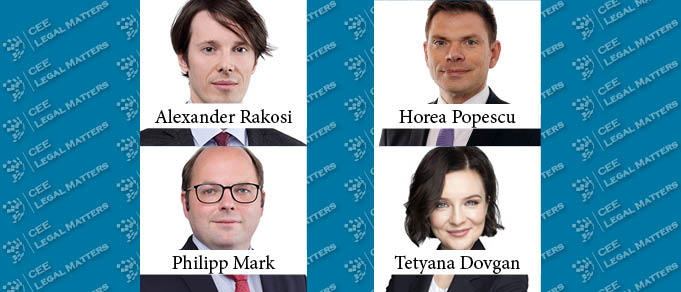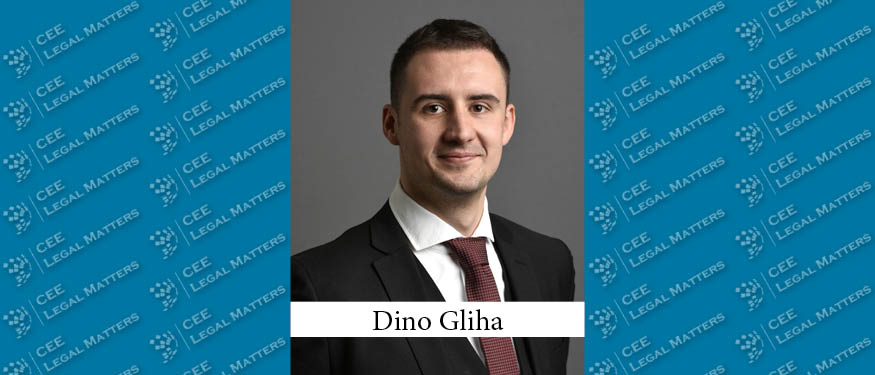CEE Legal Matters spoke with CMS Partners Alexander Rakosi, Horea Popescu, Philipp Mark, and Tetyana Dovgan about the impact the rise of ESG is having on the M&A landscape.
“ESG is getting at the top of the agenda, not just for regulators but also for M&A lawyers,” starts CMS Romania Managing Partner and Head of CEE Corporate/M&A Horea Popescu. “We see a lot of interest in M&A being driven by ESG with energy being a big winner. With ambitious targets in terms of renewables requiring a lot of investment to be hit and with energy areas becoming critical for ESG investments, we see a match between additional funding available, and increased demand, for renewables investments. As such, renewables have exploded over the last few years and we’re registering a second wave in renewables – one that’s likely to continue in the next years.”
“Another way to look at it,” adds CMS Austria Partner Alexander Rakosi, “is the development of ESG as a more tangible concept.” He explained that “the ESG angle tended to be used with a rather cryptic meaning in the past. Now, it is core and has a more developed focus in both the corporate and PE space, with ESG being considered a critical (and in certain cases more well-defined) parameter that is fundamental to companies’ growth prospects.” And this makes sense according to Rakosi since “ESG is no longer just about the investment case itself, but all sorts of suppliers or contractual counterparties (e.g. government type of contracting) now employ/mandate certain/higher ESG requirements.” These types of requirements, according to CMS Austria Partner Philipp Mark are a core driver of the growth of the importance of ESG. He explains that it is no longer just about “access to financing – in manufacturing, for example, it has become a must that suppliers are demanded to fulfill ESG requirements. If you do not progress on this front, you get left behind in the next few years. It’s a simple matter of keeping up with the times and businesses need to recalibrate to do so.”
This ability to “keep up with the times” metric influences the markets in countries where there is no specific ESG legislation too. CMS Ukraine Partner Tetyana Dovgan points out that local players are also transitioning towards ESG compliance ahead of legislation currently in draft form. The driver? “While at the moment it’s more of a nice-to-have rather than a must-have,” she says, “everything is moving very swiftly and ESG requirements will soon become a reality here as well. Big PE funds already present in Ukraine are real pioneers when it comes to the implementation of ESG in the country simply because it is already taken into consideration before making an investment decision.
Going Full Circle
Commenting on Dovgan’s point, Popescu explains that the rise of ESG is not merely a matter of potential targets trying to build themselves up to be more appealing – it is also a result of ESG having created reasons to invest in some targets that were not there in the past. “Because they know there will be a demand in the market for it, big corporates are keen to build green portfolios,” he explains, pointing to recycling companies becoming a very attractive potential target relative to how it was perceived in the past – and this creates new M&A activity. Rakosi explains that recycling, in particular, makes for an interesting case study: “There isn’t really enough capacity in the sector to keep up with the increasing demand from global players so there is a big drive to gobble up recycling capacities now to make their model sustainable in a commercial sense.”
Another example of such increased demand is in the data centers world. Dovgan explains that, while “CEE has become a preferred location for large corporates’ data centers. In the ESG world, the significant energy demand increases that this leads to raise questions on sustainability, heavily driving demand for renewables investments as a result.”
Impact on Legal Work
There are definitely changes in terms of legal work on the horizon according to Mark. “We are in the first steps of seeing ESG ramifications in a number of ways from a capital markets perspective – there we see a lot of amendments to prospectuses on the risks factors side of things in line with ESG themes.” That said, he notes that there is not much yet in terms of changes in “contractual work, but that, for sure, will change with the EU Green Bond Standard, still under discussion.” The standard, according to Mark, will “provide more details as to what an issuer has to adhere to and also for external reviewers who assess if the green bonds are invested in green projects. I am sure that if it comes into force, it’ll change our work as lawyers.”
“At this point, the main focus is to try and distill what the gold standard of ESG means,” adds Rakosi. “We have already seen legislative developments and whoever will be able to define the gold standards in their industry will have a huge impact on how deals are valued and completed.” Indeed, Popescu notes that they, as lawyers “are following a trend, not setting one. At this point, while substantively, the activity of M&A lawyers is the same, it’s a matter of assimilating the new knowledge and taking on the increased pipeline of deals due to the new fields of investment.”
Dovgan echoes Popescu’s take saying “our M&A work itself has not changed,” but she adds: “I envision that incorporation of ESG into our work will happen elegantly down the line as part of the due diligence process.” Indeed, Popescu adds that he “would not be surprised to see SPAs in the future include warranties of compliance with various ESG standards – similar to AML. I haven’t seen any yet but it doesn’t mean they don’t exist, or that they won’t.”
Similarly, Rakosi argues that – in the context of due diligence exercises – there might be additional work on material contracts when looking at precise requirements but he raises the question of whether lawyers alone can assess if the target fully complies with mandatory standards.
And this becomes even more important with Mark noting that “there are a lot of market participants out there, and all would like to label themselves as green and attract investors. Greenwashing has not really been addressed so far by the regulator but they start to get more and more close to this topic and develop a regulatory framework to impose sanctions if entities market themselves as green without a base. In some of the EU markets, regulators are keen to develop a more detailed sanctions scheme in this regard. Austria is a bit behind this but my personal view is that it should be addressed at an EU level.”
As to how lawyers can address Rakosi’s point, Dovgan notes that it will likely be a combination of analysis from lawyers and external experts – as is already the case when they bring in environmental experts. And even on the purely legal side, Popescu notes that “lawyers from several practices will need to be able to work closely together – energy, finance, corporate lawyers will all need to chip in – it all goes hand in hand and there is no one ESG lawyer, at least yet.”
M&A on Fire
“M&A activity has been on fire in 2021,” says Dovgan, “and ESG is one of the key drivers in a period where we are seeing the highest levels of activity and deal values in the last seven years in the region.”
And Rakosi notes that this has been the case despite the pandemic: “It is still a factor out there, though not entirely an inhibiting one – not only have people gotten used to working around it but some sectors have even thrived, not despite but because of it, and it’s good to see that even those which were on the short end of the stick during the outbreak are recovering nicely.”
Popescu too is optimistic. “M&A will continue to grow in the region with ESG creating virtuous cycles – new territories not dealt with in the past, new technologies, new deals.” He concludes: “It’s a trend set to continue and will only lead to positives.”
This article was written before the advent of the war in Ukraine and was originally published in Issue 9.2 of the CEE Legal Matters Magazine on March 1, 2022. More current articles on developments in Ukraine can be found in our #StandWithUkraine section. If you would like to receive a hard copy of the magazine, you can subscribe here.

















